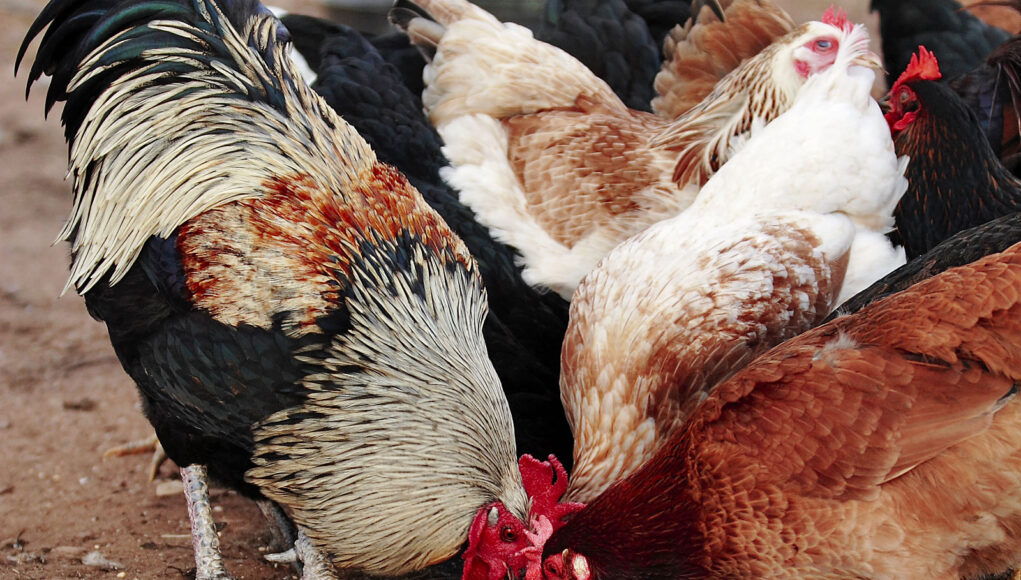Adding red pepper flakes to chicken feed has been a topic of growing interest among poultry enthusiasts. With its tremendous potential benefits, many flock owners are eager to know just how much red pepper flakes should be included in their chickens’ diet. If you’re looking for tremendous insights and approved tips, you’re in the right place to explore this technology for healthier poultry feeding.

The Benefits of Red Pepper Flakes in Chicken Feed
Natural Pest Deterrent
Red pepper flakes act as a natural pest deterrent. The capsaicin in the peppers can help keep various pests at bay, ensuring a healthier environment for your chickens. By incorporating red pepper flakes into the chicken feed, you can reduce the likelihood of infestations.
Boosts Immunity
The antioxidants in red pepper flakes can significantly boost the immune system of your chickens. These antioxidants help your birds stay healthy and combat various diseases more effectively. A robust immune system translates into better overall health for your flock.
Enhances Egg Production
Studies have shown that adding red pepper flakes to chicken feed can enhance the egg production of laying hens. This improvement is due to the increased metabolic rate that capsaicin induces, which helps in better nutrient absorption. If you want to learn more about breeds that lay jumbo eggs, check out our jumbo eggs article.

Safe Quantities: How Much Red Pepper Flakes?
Dosage Recommendations
The recommended dosage of red pepper flakes in chicken feed varies, but a common guideline is to add around 1-2% of the total feed weight. For instance, if you are preparing 100 pounds of feed, you should include 1-2 pounds of red pepper flakes. However, it’s essential to start with smaller quantities and gradually increase the amount to observe how well your flock adapts to the new diet.
Monitoring and Adjusting
It’s crucial to monitor your chickens’ response to the addition of red pepper flakes. Observe their behavior, egg production, and overall health. If you notice any adverse effects, reduce the quantity or discontinue use altogether. Gradual adjustment helps minimize the risk of overwhelming your chickens with a sudden dietary change.
Consult Experts
Before making any significant changes to your chickens’ diet, it’s advisable to consult with a poultry nutrition expert or a veterinarian. They can provide personalized advice based on the specific needs and health conditions of your flock.

Practical Tips for Adding Red Pepper Flakes to Chicken Feed
Mixing Techniques
Ensure that the red pepper flakes are evenly distributed throughout the feed. You can achieve this by thoroughly mixing the flakes with a smaller batch of feed first and then incorporating it into the larger quantity. This approach helps in achieving uniform distribution, preventing any potential issues from uneven consumption.
Storage Tips
Store your chicken feed in a cool, dry place to retain the potency of the red pepper flakes. Exposure to moisture and heat can degrade the quality of the flakes, reducing their effectiveness. Proper storage ensures that your chickens receive the full benefits of the supplemented feed.

Applying Red Pepper Flakes in Various Chicken Feeds
Red pepper flakes can be added to various types of chicken feed, including layer feed, grower feed, and starter feed. Regardless of the feed type, the key is to maintain the appropriate dosage and ensure even distribution.
Layer Feed
For laying hens, adding red pepper flakes to layer feed can boost egg production and improve shell quality. Consistent use may result in more eggs and healthier shells, contributing to the overall productivity of your flock.
Grower Feed
Adding red pepper flakes to grower feed can enhance the growth rate and health of young chickens. The benefits of capsaicin, such as improved metabolism and pest deterrence, can contribute to faster and healthier growth.
Starter Feed
For chicks, introducing red pepper flakes in small quantities can help build a strong foundation for their immune system. It’s essential to use minimal amounts initially to avoid overwhelming the young birds.
Conclusion
Incorporating red pepper flakes in chicken feed offers numerous benefits, from pest deterrence to enhanced immune health and improved egg production. However, it’s crucial to use the correct quantities and monitor your flock’s response closely. By doing so, you can harness the power of this natural supplement to achieve tremendous results in your poultry farming endeavors.
If you’re interested in more topics on chicken care and breeding, be sure to explore articles like longest living chickens and black chicken breed on our website.
Frequently Asked Questions (FAQs)
How do red pepper flakes benefit chickens?
Red pepper flakes provide several benefits, including natural pest deterrence, boosted immunity, and enhanced egg production due to capsaicin’s properties.
Can red pepper flakes harm my chickens?
When used in recommended quantities, red pepper flakes are generally safe. However, monitoring your chickens’ response and consulting a poultry expert is advisable to prevent potential issues.
How much red pepper flakes should I add to chicken feed?
The recommended amount is usually around 1-2% of the total feed weight. Start with smaller quantities and observe your flock’s reaction before adjusting.
As an Amazon Associate, I earn from qualifying purchases.








